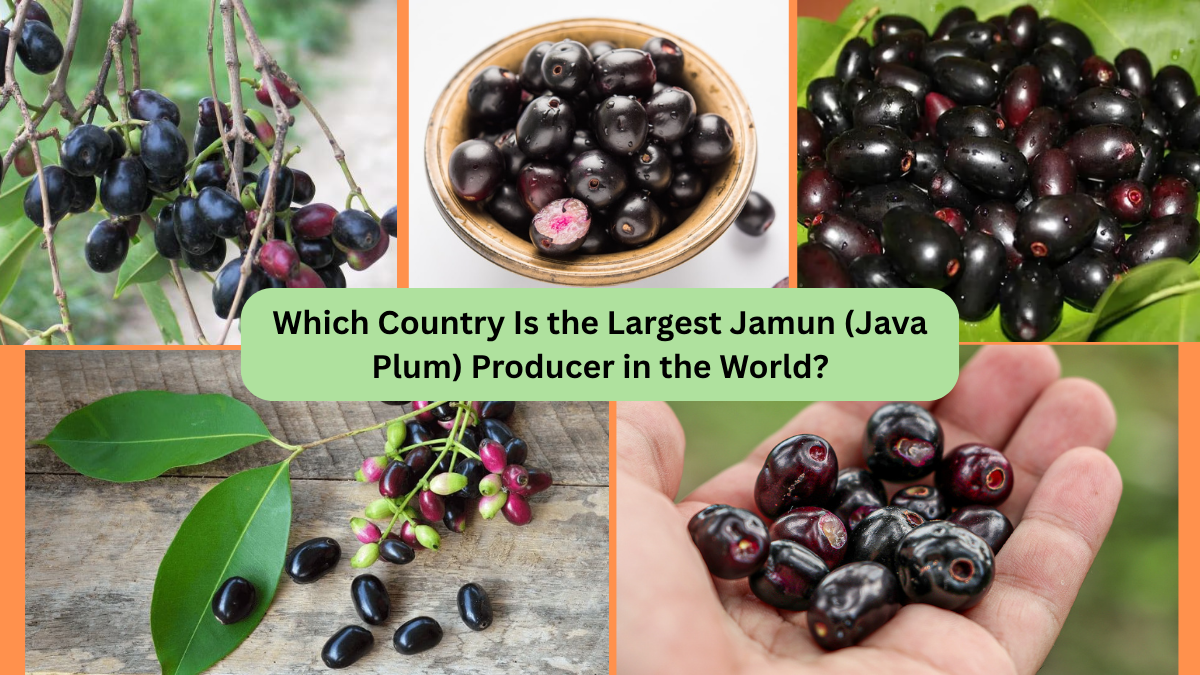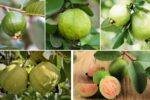When it comes to tropical fruits that combine medicinal value, rich cultural significance, and a unique taste profile, few can rival the Jamun, also known as Java Plum. This vibrant purple fruit has been cherished for centuries across the Indian subcontinent and Southeast Asia, celebrated for both its health benefits and culinary versatility. But have you ever wondered which nation leads the world in producing this incredible fruit? In this article, we’ll explore the history, uses, cultivation practices, and reveal the country that proudly holds the title of the largest Jamun (Java Plum) producer in the world.
What is Jamun (Java Plum)?
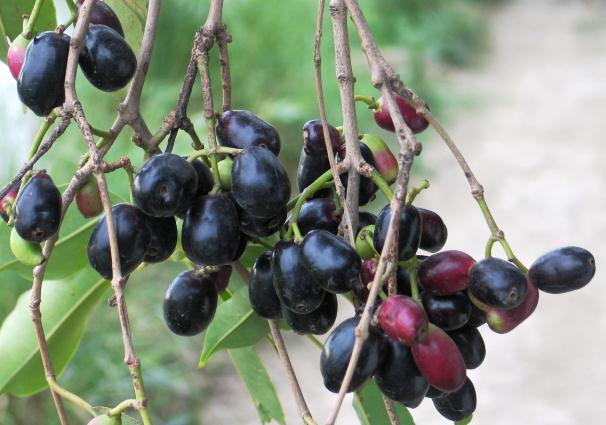
Jamun (Syzygium cumini), also known as Java Plum, Black Plum, Indian Blackberry, or Malabar Plum, is a tropical evergreen fruit tree native to the Indian subcontinent and Southeast Asia. Belonging to the Myrtaceae family, the tree is renowned for its glossy, oblong berries that ripen to a deep purple or blackish hue.
Key Characteristics
- Oblong or oval-shaped fruits
- Deep purple to black skin with crimson flesh
- Sweet and astringent flavor with a hint of acidity
- Single large seed at the center
Beyond its taste, Jamun holds a special place in traditional medicine systems like Ayurveda, Unani, and Siddha, celebrated for its antidiabetic, antioxidant, and digestive properties.
Historical Significance and Cultural Importance
Jamun has a rich history in Indian mythology, folklore, and medicine. Ancient Ayurvedic texts reference its use in treating various ailments, particularly diabetes, digestive disorders, and skin problems.
In Hindu mythology, it is believed that Lord Krishna’s lips turned purple after eating Jamun, giving rise to poetic references describing dark-hued complexions as “Jamun-colored.” It’s also associated with rituals, festivals, and rural traditions, especially during the summer harvest season.
Ideal Growing Conditions for Jamun
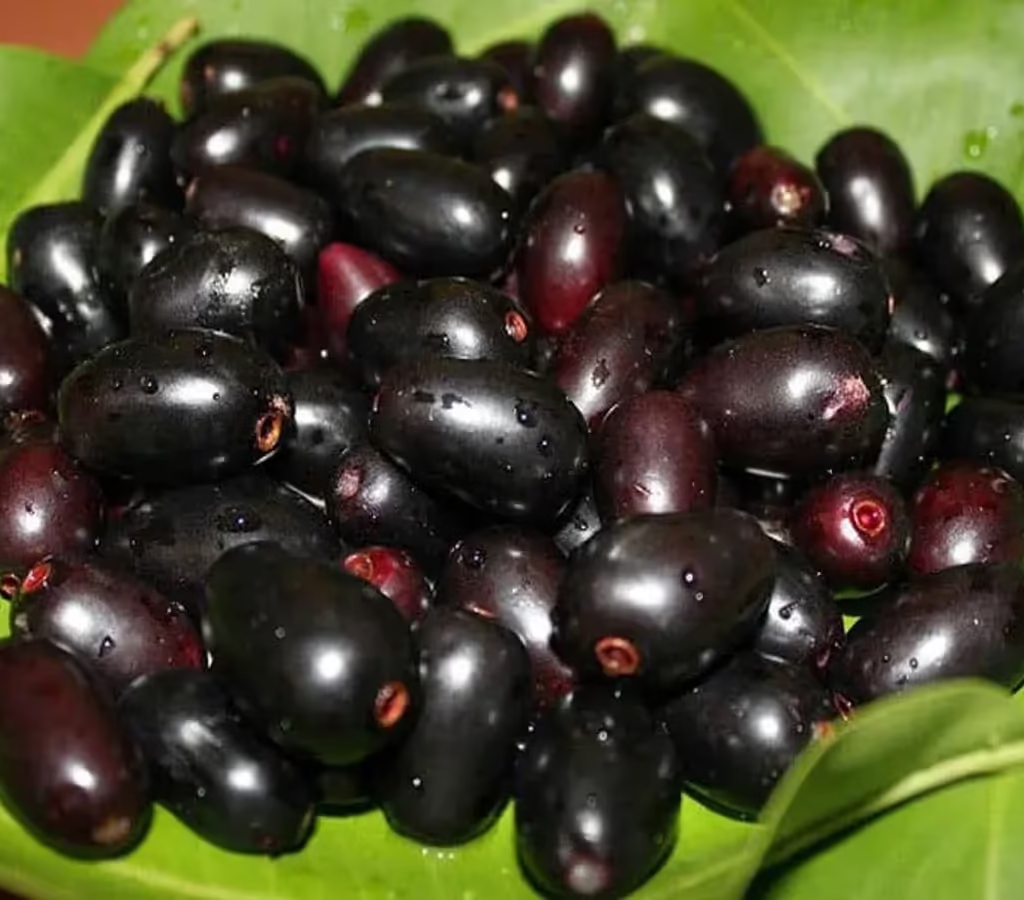
Jamun trees thrive in:
- Tropical and subtropical climates
- Areas with an annual temperature range between 10°C and 40°C
- Deep, loamy, or sandy-loam soil with good drainage
- Regions receiving 500–2000 mm of annual rainfall
It is a hardy species, adaptable to drought-prone and marshy areas, often found along roadsides, village boundaries, and riverbanks.
Global Production Overview
Though native to the Indian subcontinent, Jamun has spread to tropical and subtropical regions worldwide, including:
- India
- Nepal
- Bangladesh
- Sri Lanka
- Indonesia
- Thailand
- Philippines
- Malaysia
- Pakistan
- Australia
- East Africa
- Parts of South America (Brazil, Suriname)
However, its commercial cultivation is limited to specific regions, with most countries growing it on a small, localized scale.
Which Country Is the Largest Jamun (Java Plum) Producer in the World?
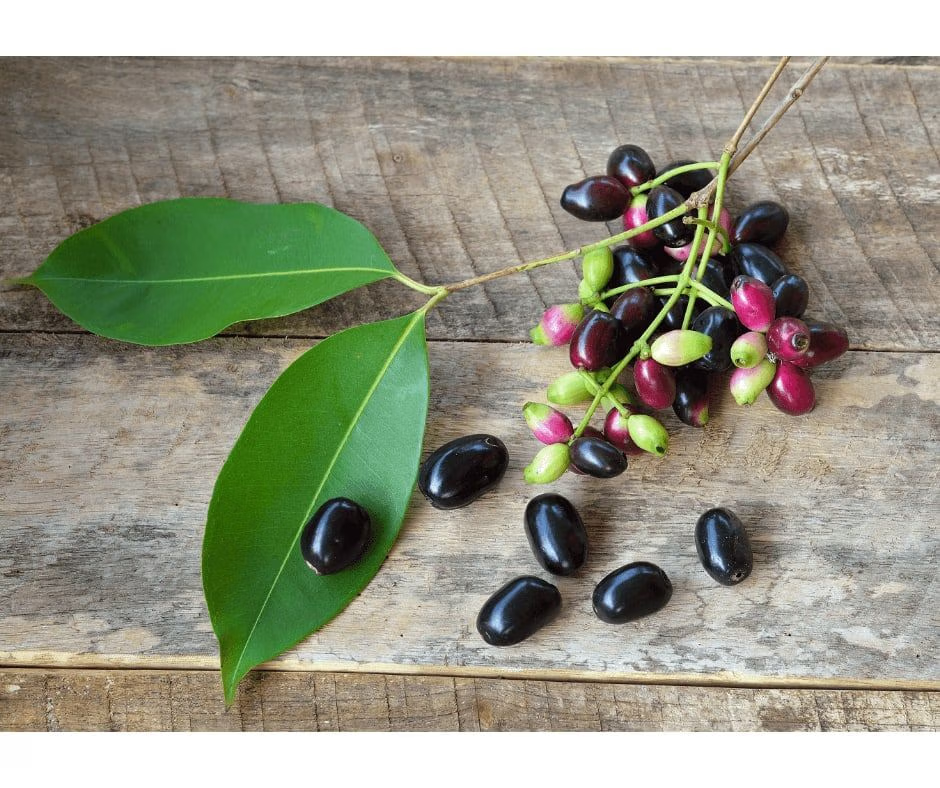
India proudly holds the title of being the largest Jamun (Java Plum) producer in the world.
Why India Leads in Jamun Production
Several factors contribute to India’s dominance in Jamun production:
1. Native Origin and Cultural Affinity
Jamun has been cultivated in India for thousands of years, deeply embedded in its culinary, medicinal, and cultural traditions. Almost every region across the country has native varieties and unique recipes involving Jamun.
2. Ideal Agro-Climatic Zones
India’s diverse climatic regions, especially in Uttar Pradesh, Maharashtra, Gujarat, Rajasthan, Tamil Nadu, Andhra Pradesh, Karnataka, and West Bengal, offer perfect growing conditions for Jamun trees.
3. High Demand in Domestic Markets
There is a massive local demand for Jamun fruits during the summer months, primarily for fresh consumption, medicinal use, and culinary applications such as juices, jams, wines, and pickles.
4. Government Support and Awareness
In recent years, Indian agricultural agencies and horticulture departments have promoted Jamun cultivation as a commercial and medicinally valuable fruit crop, offering subsidies and training to farmers.
5. Medicinal Demand in Ayurveda and Unani Systems
As diabetes cases rise globally, the demand for Jamun-based herbal remedies and supplements has increased. India, being the hub of Ayurvedic medicine, accounts for a large share of Jamun’s medicinal product market.
Other Major Producers of Jamun (Java Plum)
Though India is by far the largest producer, several other countries cultivate Jamun on smaller scales:
Nepal
Grown in the Terai and mid-hill regions, Jamun is popular in rural and traditional medicine communities.
Bangladesh
Jamun trees grow abundantly in homestead gardens and village peripheries, with the fruits consumed seasonally.
Pakistan
Cultivated mainly in Punjab, Sindh, and Khyber Pakhtunkhwa, Jamun is both eaten fresh and used in herbal medicine.
Sri Lanka
Limited production exists, primarily for domestic consumption and Ayurveda-based practices.
Indonesia and Southeast Asia
In countries like Indonesia, Thailand, and Malaysia, Jamun is consumed locally and sometimes used for natural dyes and traditional remedies.
East Africa and Brazil
Introduced by Indian migrants and colonial settlers, Jamun trees can be found along roadsides and community spaces, with limited commercial cultivation.
Health Benefits and Uses of Jamun

Jamun is not just a flavorful fruit — it offers a wealth of health benefits:
1. Regulates Blood Sugar
The seeds, leaves, and bark of Jamun are widely used in managing type 2 diabetes. Alkaloids like jamboline slow the conversion of starch into sugar.
2. Rich in Antioxidants
Jamun contains high levels of anthocyanins, flavonoids, and Vitamin C, which help neutralize harmful free radicals.
3. Improves Digestion
The astringent properties of Jamun aid in treating diarrhea, ulcers, and indigestion.
4. Boosts Immunity
Its Vitamin C and antioxidant content strengthen the immune system and enhance overall well-being.
5. Heart and Oral Health
Jamun consumption is linked to better cholesterol control, blood pressure regulation, and oral hygiene, thanks to its anti-inflammatory compounds.
Culinary and Commercial Uses
Jamun is enjoyed in various forms:
- Fresh as a summer snack
- Jamun juice — popular for its cooling and digestive properties
- Jams, squashes, and wines
- Pickles and chutneys
- Medicinal powders, capsules, and herbal teas
- Natural food colorant and dye
Additionally, the wood of the Jamun tree is valued for its water-resistant properties and is used in making carts, furniture, and agricultural implements.
Future Prospects of Jamun Production
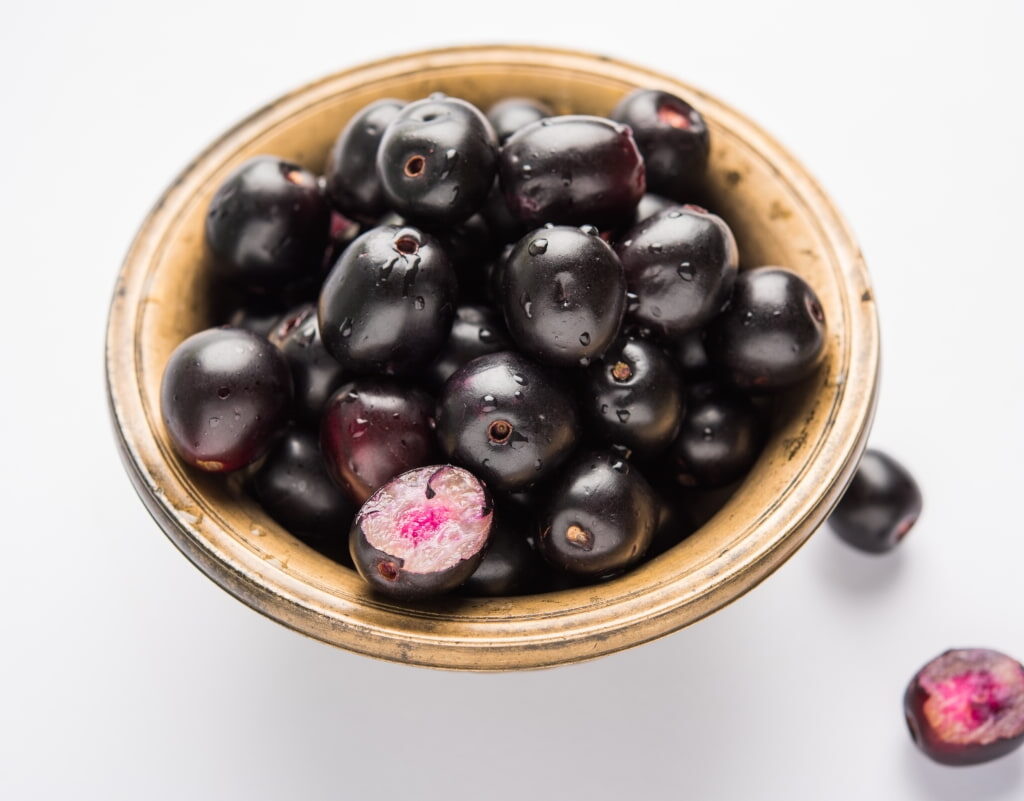
As the world’s focus shifts towards natural remedies and traditional wellness practices, the future of Jamun cultivation looks promising:
- Rising global awareness of Ayurvedic and herbal medicines boosts demand for Jamun-based health products.
- Export opportunities are growing, particularly for organic Jamun, juices, and nutraceuticals.
- Agri-business entrepreneurs and farmer cooperatives in India are investing in value-added Jamun products like wines, ice creams, and gourmet syrups.
- Government initiatives under India’s Medicinal Plants Board and AYUSH Ministry promote Jamun cultivation alongside other herbal crops.
Conclusion
The versatile and medicinally potent Jamun (Java Plum) continues to be a cherished fruit across tropical regions. While it is grown in various parts of Asia, Africa, and South America, India stands unchallenged as the largest Jamun producer in the world.
Its deep cultural significance, vast domestic demand, and medicinal value have ensured that Jamun remains a staple in Indian horticulture and traditional medicine. As global interest in superfruits and herbal wellness rises, India’s leadership in Jamun cultivation is poised to strengthen, bringing this ancient fruit to new markets and modern lifestyles.
